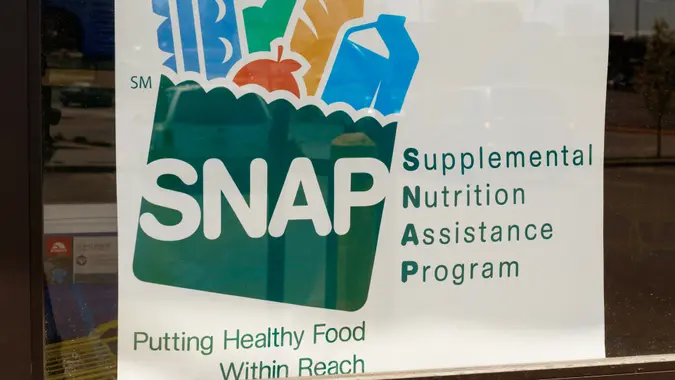How To Give the Gift of Financial Literacy This Holiday Season

Commitment to Our Readers
GOBankingRates' editorial team is committed to bringing you unbiased reviews and information. We use data-driven methodologies to evaluate financial products and services - our reviews and ratings are not influenced by advertisers. You can read more about our editorial guidelines and our products and services review methodology.

20 Years
Helping You Live Richer

Reviewed
by Experts

Trusted by
Millions of Readers
The holiday season is the perfect time of year to inspire your loved ones to get more serious about their finances. And to help encourage them along the way, you can consider giving the gift of financial literacy. It’s one of the best investments you can make.
Below are some of the best gift ideas that are worth every penny.
Financial Education Books
According to Dennis Shirshikov, head of growth at Summer and professor of economics at the City University of New York, books remain one of the most impactful ways to gain knowledge.
He said titles like “Rich Dad Poor Dad” by Robert Kiyosaki and “The Simple Path to Wealth” by JL Collins provide valuable insights in an approachable manner.
“I once gifted ‘The Richest Man in Babylon’ to my nephew, and it sparked his interest in saving and investing, leading him to start his own small business at just 18,” he said.
Financial Magazines or Newspaper Subscriptions
“Subscriptions to publications like The Wall Street Journal, Forbes or ‘Money’ magazine keep recipients informed about financial news and trends,” Shirshikov said.
He added that staying updated can inspire new ideas and foster a deeper understanding of the financial world.
Children’s Books on Money Management
For younger family members, books that introduce money concepts can set a strong foundation.
According to Shirshikov, titles like “Money Plan” by Monica Eaton and “The Berenstain Bears’ Trouble with Money” by Stan and Jan Berenstain teach valuable lessons in a relatable way.
Financial Literacy Board Games
According to experts, games like Cashflow by Robert Kiyosaki or The Game of Life can make learning about finances fun and engaging for the whole family.
“These games introduce concepts like investing, asset management and financial decision-making in a playful context,” Shirshikov said.
Subscription to Financial Planning Tools
Shirshikov explained that a subscription to a budgeting or investment app — like Mint, YNAB (You Need a Budget) or Acorns — can provide hands-on experience in managing finances.
“These tools make tracking expenses and understanding investment growth interactive and engaging,” he said.
Enrollment in Online Financial Courses
Online courses are a great way to learn more about finance. Plus, they offer structured learning that can be tailored to individual schedules.
“Platforms like Coursera, Udemy or even specialized courses from financial institutions cover topics from basic budgeting to advanced investing strategies,” Shirshikov said.
Personalized Financial Coaching Sessions
“Sometimes, personalized advice makes all the difference,” Shirshikov explained.
He said gifting a session with a certified financial planner or a financial coach can provide tailored guidance that books or apps can’t offer.
Investment in a 529 College Savings Plan
Contributing to a child’s education fund not only supports their future but also opens up conversations about the importance of saving and investing early.
“It’s a gift that underscores the value of long-term planning,” Shirshikov explained.
Investment in Stocks or ETFs
Gifting stocks or shares in an exchange-traded fund (ETF) can be a practical introduction to investing. And it can be a great starting point to building wealth.
You don’t have to spend an exorbitant amount of money to buy shares of expensive stocks, either. “Platforms today make it easy to purchase fractional shares, allowing even modest gifts to hold significant value,” Shirshikov said.
DIY Investment Kits or Simulated Trading Accounts
If you know someone wants to try out investing but may not be ready to take the risk, you can gift them a tool that allows them to try it out risk-free.
“Tools that allow individuals to experiment with investing in a risk-free environment can be both educational and exciting,” Shirshikov said. “Simulated trading accounts or kits that explain how to build a diversified portfolio can demystify the process of investing.”
 Written by
Written by  Edited by
Edited by 

























